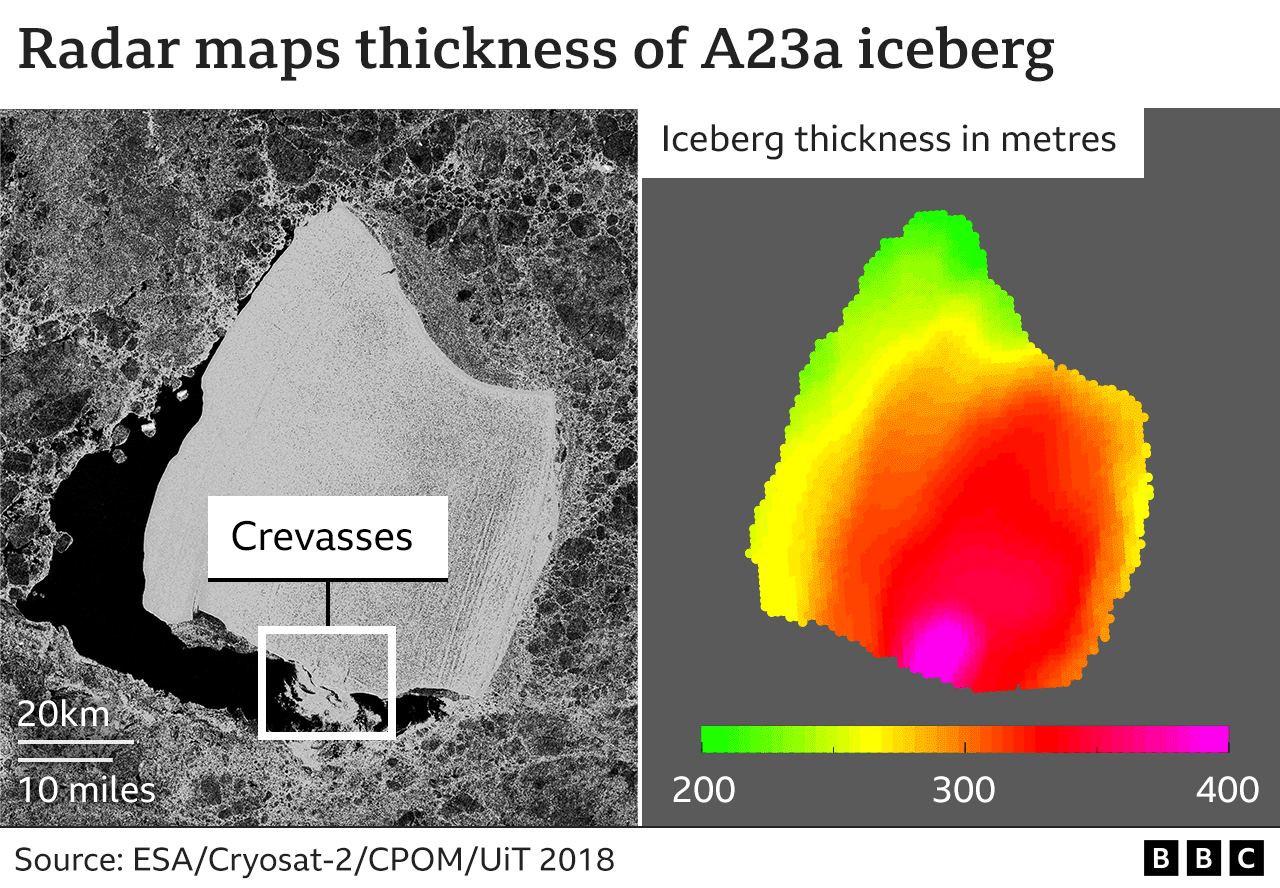-

-
-
Loading

Loading

Scientists have now obtained accurate measurements of the world's largest iceberg, A23a. Using satellite data, it has been determined that the iceberg has an average thickness of over 280 meters and covers an area of 3,900 square kilometers. This gives it a volume of approximately 1,100 cubic kilometers and a mass just below one trillion tonnes. A23a broke away from the Antarctic coast in 1986 and is now reaching a critical point in its journey. Over the next few weeks, its trajectory through the Southern Ocean will be decided. Comparisons have been made with notable structures such as the Shard tower in London, which is shorter than the iceberg's thickness. The measurements were obtained through the European Space Agency's CryoSat-2 mission, which uses radar altimetry to determine the iceberg's thickness. This data is crucial for monitoring the iceberg's thinning as it is exposed to warmer ocean waters. A23a was formed when a group of icebergs broke away from the Filchner Ice Shelf in the Weddell Sea. It has been stuck for more than three decades but has gradually lost mass and started moving. It is now expected to continue along a path known as "iceberg alley," which leads towards South Georgia. Scientists are closely monitoring the iceberg's progress as large icebergs have a significant impact on the surrounding environment, including mixing ocean waters and fertilizing the ocean with nutrients.